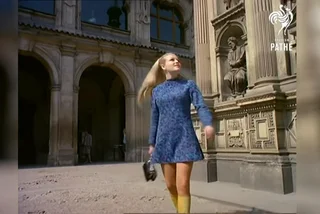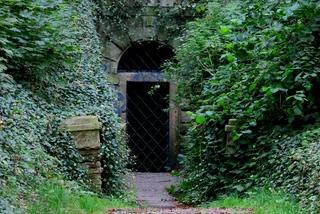Some Prague neighborhood names are pretty clear. Vinohrady at some point in time had vineyards. Others are a bit of a head-scratcher. What exactly does Vršovice or Strašnice mean? According to an ongoing project to render the names in English, they are Putcherington and Scaremingham. And while it is not really a bad place, Hrdlořezy comes out as Throatcuttings.
The Translations of Prague Neighbourhood Names (TOPNN) project released its fifth edition at the start of this year. The project began in 2013 on Flickr and Facebook using maps and text tables but has since moved to a dedicated interactive website that makes it easier to click on each district or use the pull-down menu for detailed info. The simple map and tables are still available as downloads.
“The original intent was to render only an English translation for each name of Prague's 112 neighbourhoods. But as the project developed, detailed information concerning the etymology, earlier forms and elements of these names were added,” Martin Pirout, the main person behind the project, said on the website.
The map concentrates on the official cadastral zones in the city. Holešovice and Bubeneč are included, but Letná is not, as that is just a popular distinction people make and not an official district. Names for streets and metro stops are also not covered, though there is a separate map made by someone else that tackles the metro.
The names are meant more for amusement purposes than to be taken as actual fact. The listings each have a degree of certainty included. These range from 100 percent for places like Černý Most, referring to a black railroad bridge that used to be nearby, to 5 percent for Nebušice, which comes out as Wretchingham. The author says there is also a legend about Nebušice that renders it as “don’t pound” since the mystical Princess Libuše complained of noise there.

He sees a broad parallel between the long evolution of British place names and those in Prague. The names often also reflect changes in language over time. For this reason, he used British English, and many of the renditions have a distinctly British flavour. Old Czech words are replaced with equally old ones from English, and commonplace endings.
Many of the attributes a place was once known for no longer exist. “Both personal and place names are interpreted in the historical present tense; for example, Nedvězí is explained as ‘the place where bears frequent,’ although this is almost certainly not the case today,” he said. A bear has been seen near Prague recently, so the name is not so far off.
For some places a lot of guesswork is involved as the meanings of the root words are lost in time.
“There are neighbourhood names that lack any generally accepted interpretations; consequently, their translations here are based on uncertain origins or dubious folk etymologies,” he said.
He points out one case where a name was changed to avoid embarrassment for the residents. In this case, he interprets the modern name, not the original.
“Hloubětín … has been officially changed from Hloupětín to avoid a derogatory connotation, so it is translated with regard to this name change,” he said. The word “hloupý” means silly or stupid. He renders Hloubětín as “Deepsworthy” from the root “hluboký” meaning deep, while “worthy” is an old word for an enclosed farm. Actually likely comes from “Hlúpata’s farmstead,” with Hlúpata being a personal name, though a rather insulting one.

Getting back to our original examples, Vršovice is the village of Vrš's people. Vrš is a personal name that could be related to an old Czech word for a basket for catching fish. The “ing” means “people of” and “ton” refers to a farm or village. Altogether, this makes Putcherington.
Strašnice comes from the village of Strašen's people. Strašen, from the word “strašný,” is a person who scares away evil spirits, and “ham” refers to an estate or village. Perhaps a local exorcist lived there a long time ago. Put together, this equals Scaremingham.
Hrdlořezy literally means cutting throats, from “hrdlo” for throat and “řez,” a root word related to cut. Not putting too fine a point on it, this comes out as “village of murderers slitting throats of their victims,” or Throatcuttings.
The area has long since been gentrified. Highway robbery by masked men with dirks and flintlock pistols is now rather rare. The name goes back to at least the early 1500s, but whether on not it was truly filled with robbers is not known. The name could also have been a way of discouraging unwanted outsiders from visiting – like Iceland, which has little ice, while less-desirable Greenland has lots of it.
It is not the only place associated with crime. Horní Měcholupy and Dolní Měcholupy are Upper and Lower Pouchreavings. “Mech” is an old word for a pouch, and “lúpiti,” means to steal. These have been rendered into Old English equivalents. Before pockets were popular, a street thief was called a “cutpurse,” and seemingly they had a base of operations here. Perhaps in history, it was a place to avoid, but now it has nice houses, large parks, and some lakes.

A neighborhood that would likely draw the young Instagram influencers is Vixenbarkden, picking up on the foxy Czech name of Lysolaje. “Lisa” meant female fox. It has since transformed into “liška.” Certainly, it is a more attractive address than Shuckingham, the map’s rendition of Dejvice, or Daffington Parva for Hodkovičky.
Wedding planners might want to find a nice spot in Bridensnade Upon the Woods, which would certainly look nice in engraved gold letters on an invitation. The actual name is Újezd nad Lesy, a,k.a. Prague 21, which is slightly less romantic.

Žižkov through a bit of prestidigitation becomes Sullivanbergh. The neighborhood is certainly named for Jan Žižka, the one-eyed Hussite leader. The Irish surname O’Sullivan might mean one-eyed, and “bergh” means hill. The author gives this a 5 percent accuracy, but it’s a fun try.
Some of the names are debatable. The map has Smíchov as Laughterston. And while many people do relate this neighborhood to the Czech word for a smile or laugh (smích), other historians relate it to the word for mixed (smíšený), as it was outside the town walls and local rules allowed for people to grow crops on small lots of land, so people of various backgrounds were closely mixed together.












 Reading time: 5 minutes
Reading time: 5 minutes 





























